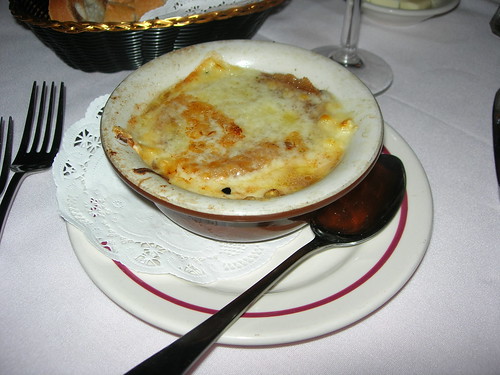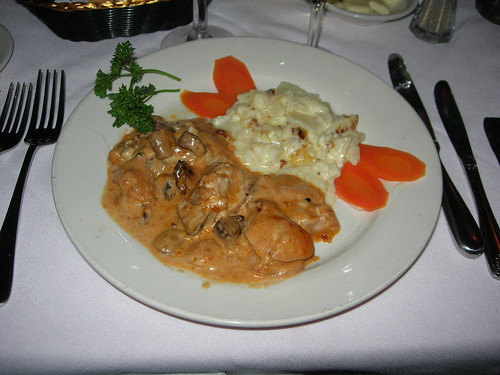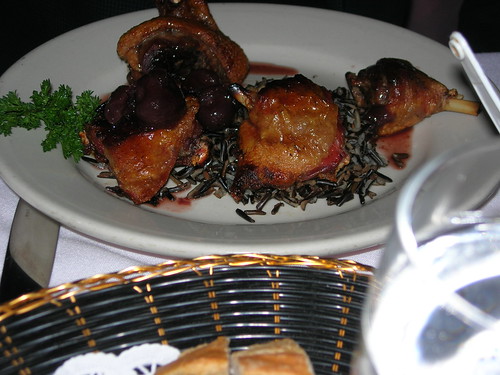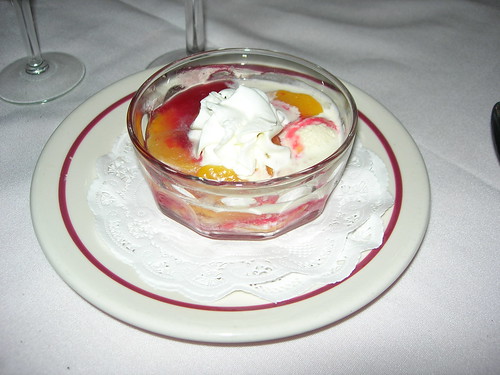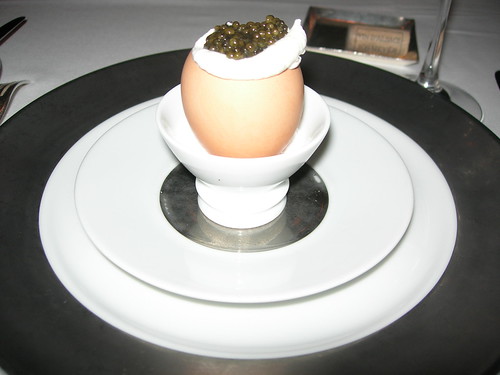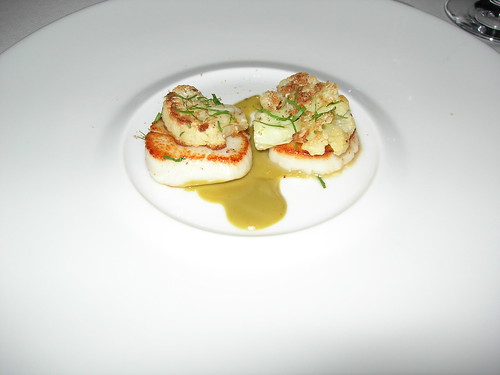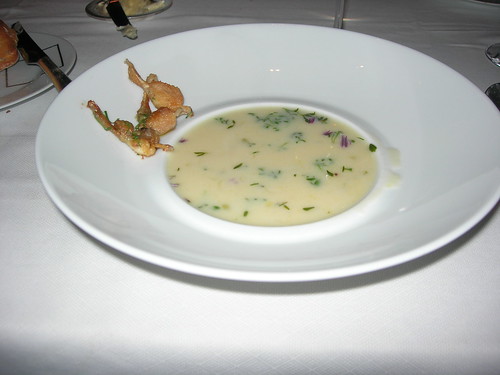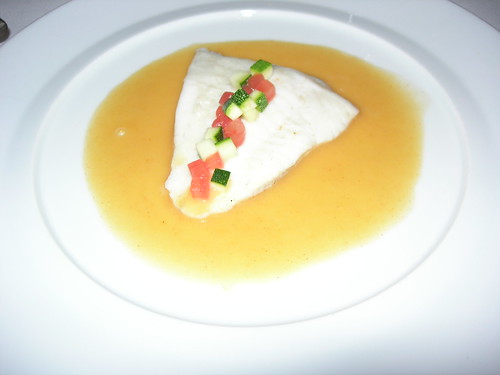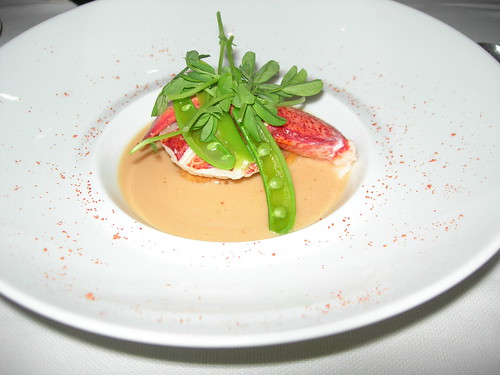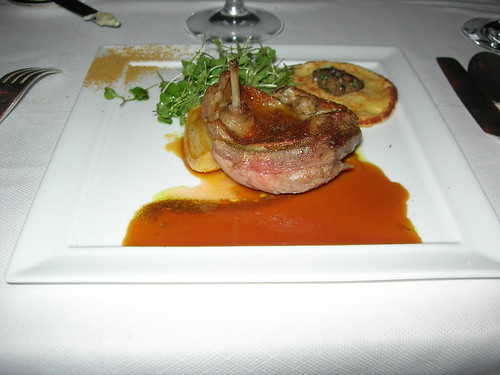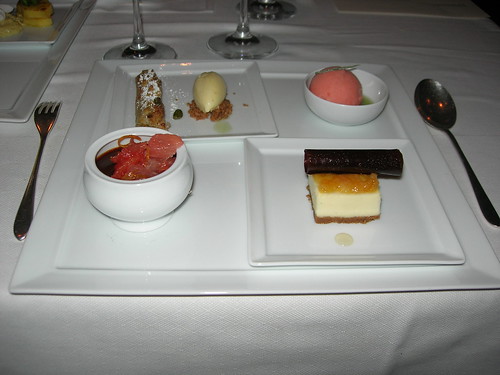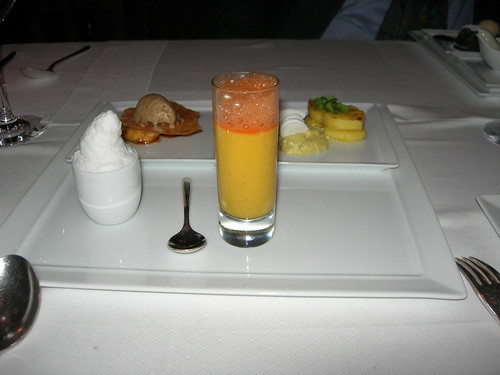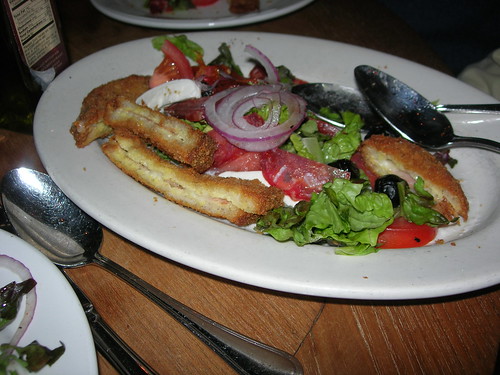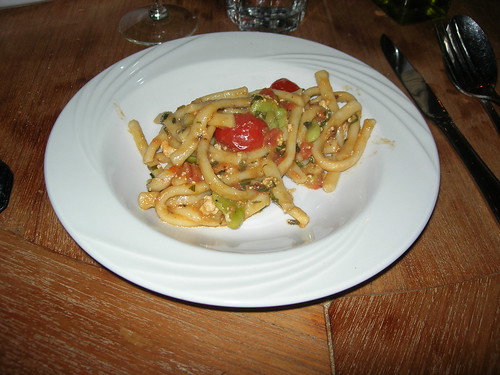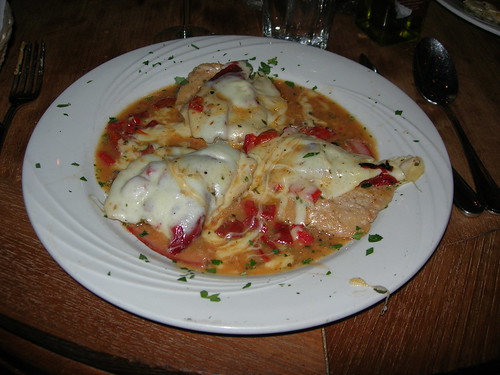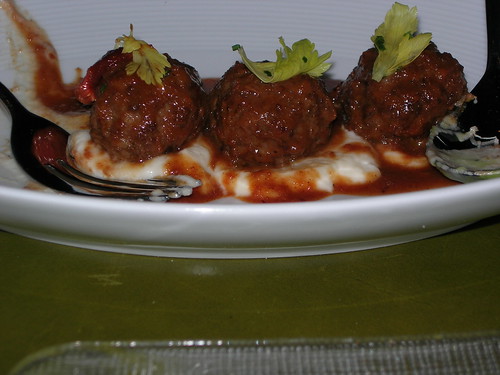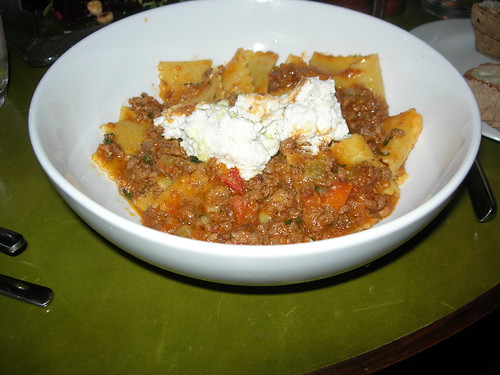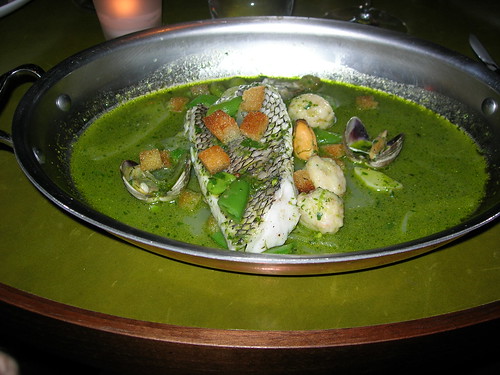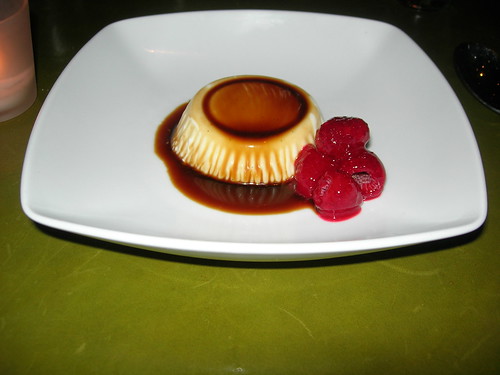Fennel Fantasia New York City Entry #91 Eleven Madison Park
When a restaurant manages to scale the heights of its potential - to discover its G spot - critics must be of two minds. Gone is the opportunity to slip in those cutting bon mots that readers treasure. Great great great makes a tinny sound.
But when a restaurant that once was passable becomes within spitting distance of perfect, there is a story to tell. Eleven Madison Park was designed to be the high-end of the Danny Meyer portfolio. Yet, despite an art deco nod to extravagance, it never reached its promise. The food was critiqued as pedestrian, or at least not sufficiently startling as to capture the heart of high-concept diners. (I had not dined at Eleven previously.)
This is a sour back story of a glorious present. Danny Meyer, the George Steinbrenner of New York dining, bought himself the Barry Bonds of the Bay cuisine (Not the most apt metaphor these days, but much rare chemistry and raw power is involved.) The cross-continental hiring of Daniel Humm, the Swiss-born chef, formerly working wonders at San Francisco's Campton Place, was inspired. Campton was perhaps the finest of San Francisco restaurants (although I can't compare Campton to Restaurant Gary Danko). This deal is as inspired as the culinary sensibility that Humm brings. When such cookery is blended with the preternaturally gracious, cheerful, and (usually) attentive service at a Danny Meyer restaurant, the results are bound to astound. Eleven Madison had been the recipient of the 2004 James Beard Award for Service. At the time this honor may have felt like being named Miss Congeniality at the Playboy Club, but tonight our main server, Adam, was world-class in charm, not through Franco-haughty efficiency, but with all of the ingratiating jocular charms of New York wit. The service was as cheering as the food.
Of the over 100 meals, I have eaten this year, Eleven ranks second, just behind Per Se (is all great cuisine left coastal?), and when one realizes that the tasting menus are $75.00 (four course, plus at least four concealed courses), the ratio of joy/dollar ranks just behind Papaya King.
As a matter of culinary politics, Eleven Madison Park is probably not a candidate for a Michelin trifecta. The room, through striking with its distant, elegant ceiling, lacks the gravitas of a three-star temple and, judging by my dinner, Humm and Meyer might not need to tweak the dishes, but double the charges.
Chef Humm offers three four-course tasting menus: an aquatic, seasonal, and garden (vegetarian) menu - the latter relatively uncommon in Gotham, but de rigueur by the Bay. My companion and I both selected the first (this was not a circumstance in which I could demand half a plate).
Before we reached our amuse, we were amused by five appetizettes. I can't recall so many firecrackers on the same plate. The aspect of Chef Humm's cooking that is so impressive is that he seems throughly comfortable with ideas of molecular cuisine, but never does he pay obeisance to these post-modern demand. Twice we spied foam, but each time the foam made a case for its presence. In this Humm belongs in the same category as Thomas Keller. Perhaps because of the lower price point, the food was less fussy, if equally flavorful. Possibly some of the "touches" were missing, but the heart was beating as strongly.
First, we were treated to an airy foie gras pate. Having just learned that my Chicago City Council has decided to deny us foie gras (their "live and let liver" policy), I must consume as I can. But this was a more like the pates one used to eat when goose liver was the organ of choice, not heated bits of liver, but a smooth pate of infinite grace.
Next was what is likely the finest sweetbread that I have eaten. (Calories are not to be counted). This buttery, crispy sweetbread was surrounded with rich brick dough (a thin wheat dough) and a bit of chive. Even those who profess a distaste for sweetbreads could offer no complaint here. As satisfying a pair of bites as might be imagined, and a reminder that with crispy genius, food can sometimes be auditory as well as mastering the other four senses.
In the midst of the line up was raw Bigeye Tuna. Very nice, but that is not what made this dish worthy. It sat on a slice of raw fennel (with more fennel to come) with a dusting of fennel pollen and a little fennel confit. The slightly bitter edge of this petit four was a profound contrast to the foie gras and sweetbreads.
Fourth was a Hummdinger: a small piece of Swiss bunderfleish (dry, salted beef) blanketing a bit of pickled radish. This jewel (one bite this time) boldly combined salt and sour in a way that reminded a diner that, like the most creative molecular chef, Chef Humm is not afraid of big, bad, bold combinations - and he gets them right.
Finally a galette napped with a goat cheese mousse and a touch of Meyer lemon jam. Once again the flavors were brazen and heroic: the jam sliced through the sometimes unctuous creaminess of goat cheese.
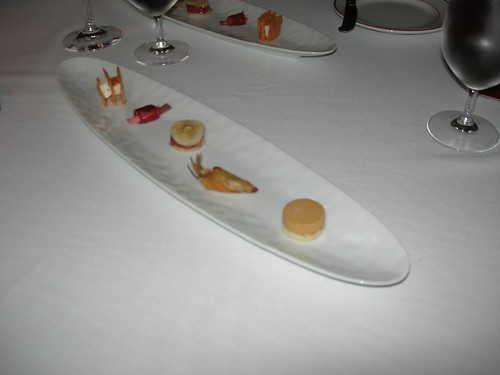
We imagined that this quintet would constitute our amuse, but Chef Humm had other ideas. At Eleven things come in numerical sequences, and our amuse twinned tomato. I was stunned by a sherry tomato sorbet with a comb of potato gaufrette. Forget the gaufrette, the sorbet was essence of tomato: a perfect cooler by the Tomato Ice King of Madison Park. Ice cream for adults, just ready for a steamy afternoon.
My first taste of the sorbet's partner disappointed: a green gazpacho - green tomatoes, tomatillos, avocado, romaine, cucumber, and zucchini, blended into a light, bright green liquid. The soup tasted bland and thick until the sour, vinegary aftertaste hit. This radiant sourness emerged just as I was concluding that the gazpacho was nothing special. Few chefs are skilled enough trust aftertastes. I might propose a lighter version of the soup, but this was something special.
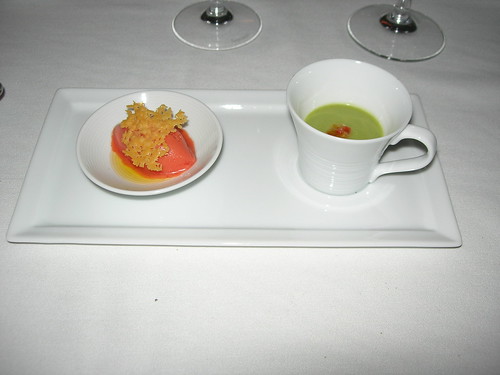
We still were not ready for the first dish on our tasting menu. Next was perhaps the highpoint of the meal: a fantasia in fennel - a sly salad of fennel raw, cured, shaved, pickled, pollinated, sprouted, and served in beignets, dressed with chive oil and lemon vinaigrette, coupled with small sections of blood orange. I admire a chef who is willing to play with tastes on the bitter register: bondage and discipline for the foodie set. (Sadly I lack an image of this beautifully presented dish).
After this, the menu. First listed was "Maine Diver Scallops ‘En Chaud-Froid' with Osetra Caviar." A pair of scallops one hot, one cold, each with crowned with osetra caviar. The hot scallop was napped with a rich lobster bouillabaisse; the cold was served with a cauliflower mousse on a pool of cream. I was amazed that a scallop could taste so different with smartly distinct preparations. Perhaps I preferred the warm scallop, but the cool preparation was delightful as well, and together the flavors revealed the force of thoughtful synthesis.
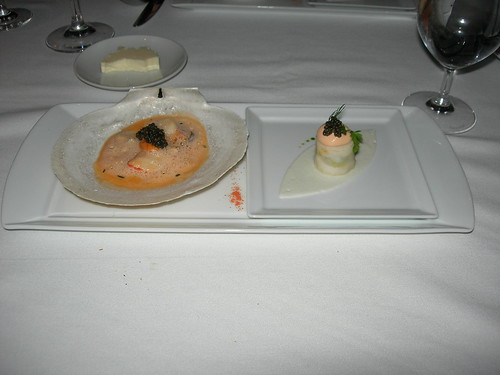
Our second aquatic course was centered on Blue Hawaiian Prawns, perhaps a tribute to The King, and one that truly honors Sir Elvis. This shrimp on steroids was served in a saffron consommé with tastes of green apple and ginger. This dish was pure in conception and in its execution. Another brave and splendid dish. With all of these flavors flowing about one might wonder about muddy flavors, but the flavors were clear and distinct, and even though it was served on a tasting menu, the plate was large enough to satisfy with all the tastes evident.
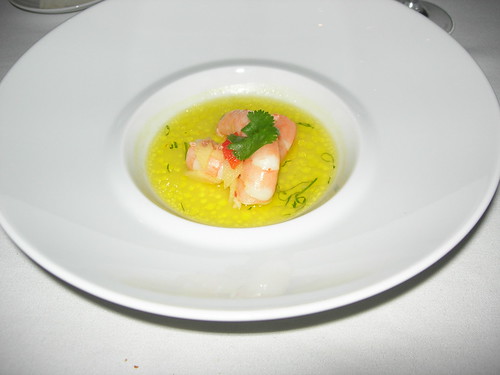
The centerpiece of our dinner was a Butter Poached Nova Scotia Lobster with Chantenay Carrots (Who knew of carrot varietals?), orange-soy sauce, and a touch of Gewürztraminer-sea urchin foam. This was another in a string of valiant and compelling plates. Chef Humm has a way with vegetables - the carrots were splendid. The mix of lobster, orange, Gewürztraminer and uni was entrancing - rich and slightly puckery. Humm's dishes are recognizably modern, but still hold to classic techniques of flavor and presentation.
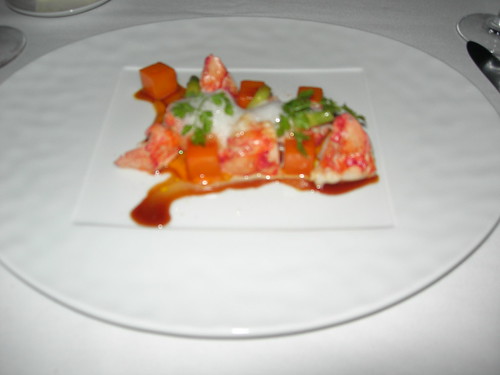
Following was our third amuse (or was it our eighth), a palate cleanser in the form of a raspberry soup with almond meringue and clear vanilla ice cream. Perhaps one could dismiss this dish as only delicious, but it was a dessert that is suitable for daily consumption.
Finally appeared a triptych of Meyer Lemon: a meringue tart, a warm Chiboust (lemon custard) with ginger cookies, and a scoop of lemon-basil sorbet with kaffir lime. I found the tart less special than its companions, particularly the ethereal custard, but pastry chef Nicole Kaplan can match Chef Humm bite for bite. Perhaps these were not grand, glorious, and evocative desserts, startling with surprises, but they reflected a serious of purpose as evident at the end of the meal as at the start.
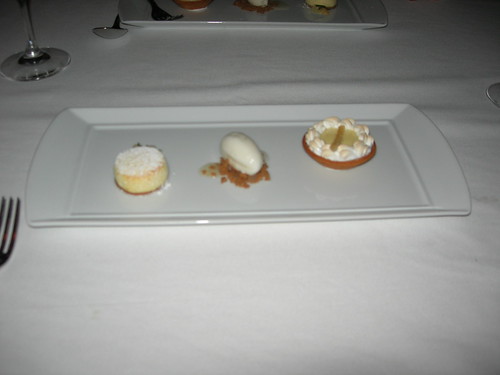
Eleven Madison Park is, today, a signature New York restaurant. If we place Per Se on a shelf in the heavens, Eleven Madison provides as much brilliance as any meal I have had, and at its price it is without any peer. Even if restaurants critics cannot slip in the nasty bon mot, Eleven Madison Park makes a writerly diner grin.
Eleven Madison Park
11 Madison Avenue (at 24th Street)
Manhattan (Flatiron)
212-889-0905
